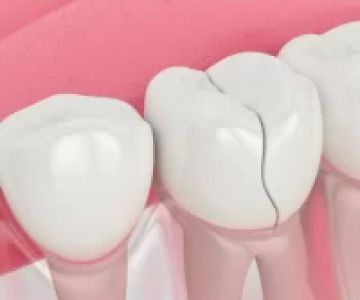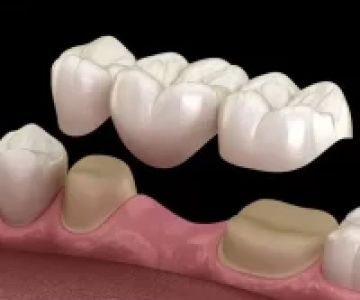How to Deal with Baby Bottle Tooth Decay
- recognizing-early-signs-of-baby-bottle-tooth-decay
- why-babies-get-tooth-decay
- common-pitfalls-in-bottle-feeding
- stories-from-parents-on-social-media
- best-practices-for-preventing-decay
- taking-the-next-step-in-baby-oral-care
Recognizing Early Signs of Baby Bottle Tooth Decay
1. Spotting the Clues Before They Escalate
Parents often focus on adorable smiles and first words, but keeping a close eye on your baby’s oral health is equally important. Early signs of baby bottle tooth decay can include white spots or lines on the front teeth—subtle at first, but a serious warning that sugar and bacteria are compromising enamel. The faster you act, the easier it is to address how to deal with baby bottle tooth decay effectively.
The Importance of Quick Detection
A swift response can prevent minor issues from developing into painful cavities or infections. Observing these subtle changes allows parents to catch the decay process early and seek professional advice if needed.
Why Babies Get Tooth Decay
2. Understanding the Triggers
Babies are naturally drawn to sweet tastes, whether it’s formula, breast milk, or fruit juice. Prolonged exposure to sugary liquids can create a breeding ground for bacteria. The resulting acids wear down emerging teeth, triggering what’s commonly known as baby bottle tooth decay. Even a seemingly harmless habit like letting your child nap with a bottle can increase their risk.
Genetics and Family History
In some cases, heredity also plays a role. If parents had weak enamel or a history of frequent cavities, a child’s susceptibility might be higher. That’s why adopting a proactive approach is essential for safeguarding those tiny teeth.
Common Pitfalls in Bottle Feeding
3. Breaking Bad Habits Early
Picture this scenario: your little one is fussing at bedtime, so you hand them a bottle of milk or juice for comfort, thinking it’s the easiest way to soothe them. While this might offer short-term relief, it sets the stage for sugar pooling around the teeth all night long. This practice is a significant factor in how to deal with baby bottle tooth decay, as it’s one of the key contributors to early childhood cavities.
Hidden Culprits in Daily Routines
Beyond bedtime bottles, seemingly innocent acts—like letting your child sip sweetened drinks during car rides—can also lead to prolonged sugar contact with teeth. Small changes in these routines often have a big impact on overall dental health.
Best Practices for Preventing Decay
5. Simple Steps That Make a Big Difference
To master how to deal with baby bottle tooth decay, it’s vital to start with consistent habits. Clean your baby’s gums gently with a soft cloth or infant toothbrush, even before the first tooth emerges. Introduce water in place of juice or milk when possible—especially at nighttime—to reduce sugar exposure. Scheduling a dental visit by your child’s first birthday helps set the tone for good oral health in the years to come.
Teamwork with Caregivers
Enlist babysitters, grandparents, or daycare providers in your plan. Ensure everyone understands the significance of limiting sugary liquids and regularly cleaning your little one’s teeth or gums, so you’re all working together to maintain a healthy routine.
Taking the Next Step in Baby Oral Care
Ready to safeguard your child’s smile? Incorporating these proactive measures is a great start to prevent baby bottle tooth decay. For professional guidance and specialized products designed to protect tiny teeth, visit Dentistry Toothtruth. Click now to explore innovative solutions, learn best practices, and take charge of your baby’s oral health journey today!







 All Seacoast Dental and Associates3.0 (38 review)
All Seacoast Dental and Associates3.0 (38 review) Smile Academy Pediatric Dentistry4.0 (48 review)
Smile Academy Pediatric Dentistry4.0 (48 review) Kansas City Dental Implants & Oral Surgery4.0 (229 review)
Kansas City Dental Implants & Oral Surgery4.0 (229 review) South Pasadena Dental Group - General Dentist & Cosmetic Dentistry South Pasdena4.0 (76 review)
South Pasadena Dental Group - General Dentist & Cosmetic Dentistry South Pasdena4.0 (76 review) Children's Dental Specialists & Adult Dentistry - Chester5.0 (37 review)
Children's Dental Specialists & Adult Dentistry - Chester5.0 (37 review) First Class Dental PA5.0 (248 review)
First Class Dental PA5.0 (248 review) The Importance of Oral Health Education During Pregnancy for a Healthy Pregnancy
The Importance of Oral Health Education During Pregnancy for a Healthy Pregnancy Best Tips for Brushing Your Teeth Properly for Healthy Gums: Essential Techniques for Oral Health
Best Tips for Brushing Your Teeth Properly for Healthy Gums: Essential Techniques for Oral Health Why Skipping Dental Checkups Can Lead to Bigger Oral Health Problems
Why Skipping Dental Checkups Can Lead to Bigger Oral Health Problems Advantages of Porcelain Dental Restorations
Advantages of Porcelain Dental Restorations How Can Diabetes Cause Tooth and Gum Problems? Preventing and Managing Oral Health Issues
How Can Diabetes Cause Tooth and Gum Problems? Preventing and Managing Oral Health Issues Healthy Habits for Promoting Good Oral Health and Hygiene: Tips for a Healthy Smile
Healthy Habits for Promoting Good Oral Health and Hygiene: Tips for a Healthy Smile